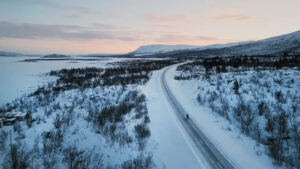Doug Scott’s legendary resumé began in the fells of the Peak District. Soon he was pioneering early big-wall climbing in remote locations from Baffin Island to Chad. Later, he notched historic firsts in the Himalaya and the Karakorum. In 2011, he became just the third-ever winner of the lifetime achievement award at the Piolet d’Or.
In 2013, he sat down to discuss his storied career on video. Clocking in at just under 12 minutes, the interview nevertheless ranges widely. Scott discusses his illogical love of big-wall overhangs — “I could never rationalize the exposure” — his famous first ascent of Everest’s South West Face with Dougal Haston, and his “most demanding climb,” a brutal alpine-style ascent of Kanchenjunga in 1979.
Among all these rich stories, it is perhaps his move away from siege-style expeditions that resonates most. As the mountaineering world continues to pivot towards super-lightweight climbs, he explains his own regrets about using fixed lines and bottled oxygen on Everest:
“There’s no real commitment [with fixed ropes]. You haven’t really left the ground, you’re still connected to the ground, you’ve sort of brought the ground up with you.”
Scott has thought deeply about his career, and the why of climbing pops up repeatedly. Is it ego? Would he have done the same things if he was the last man on earth? Why does he climb? He closes the interview with the only answer he’s been able to think of: “I get grumpy when I don’t.”






